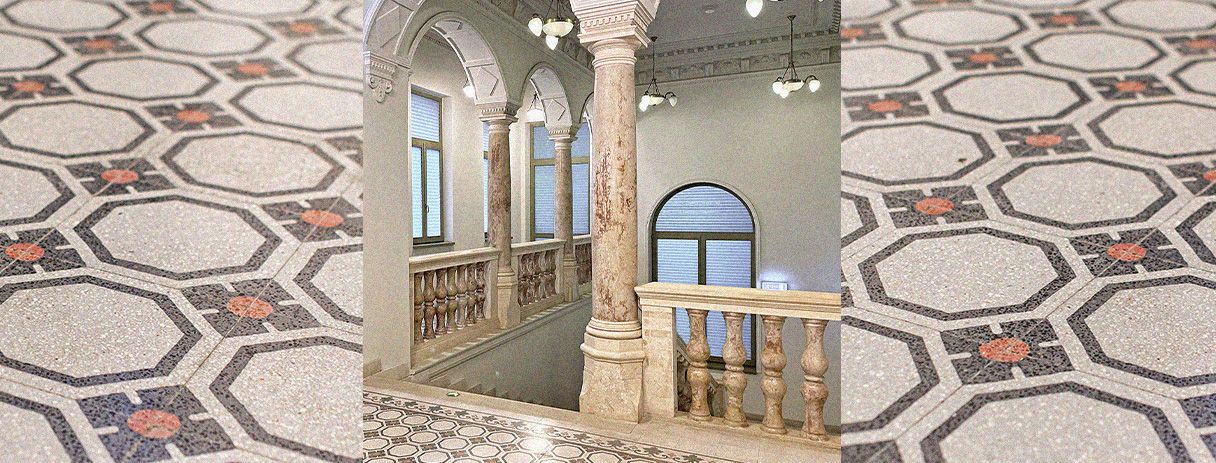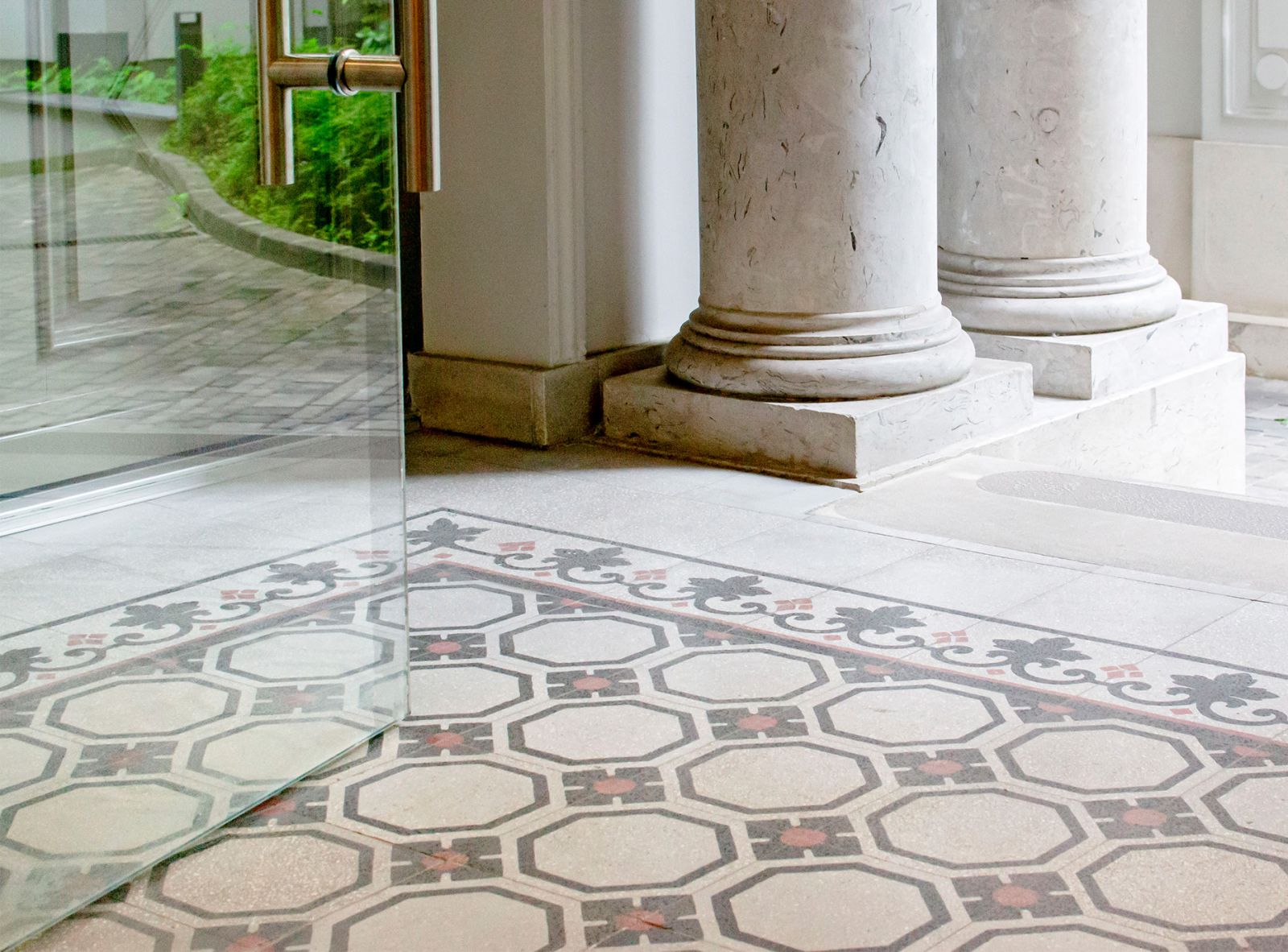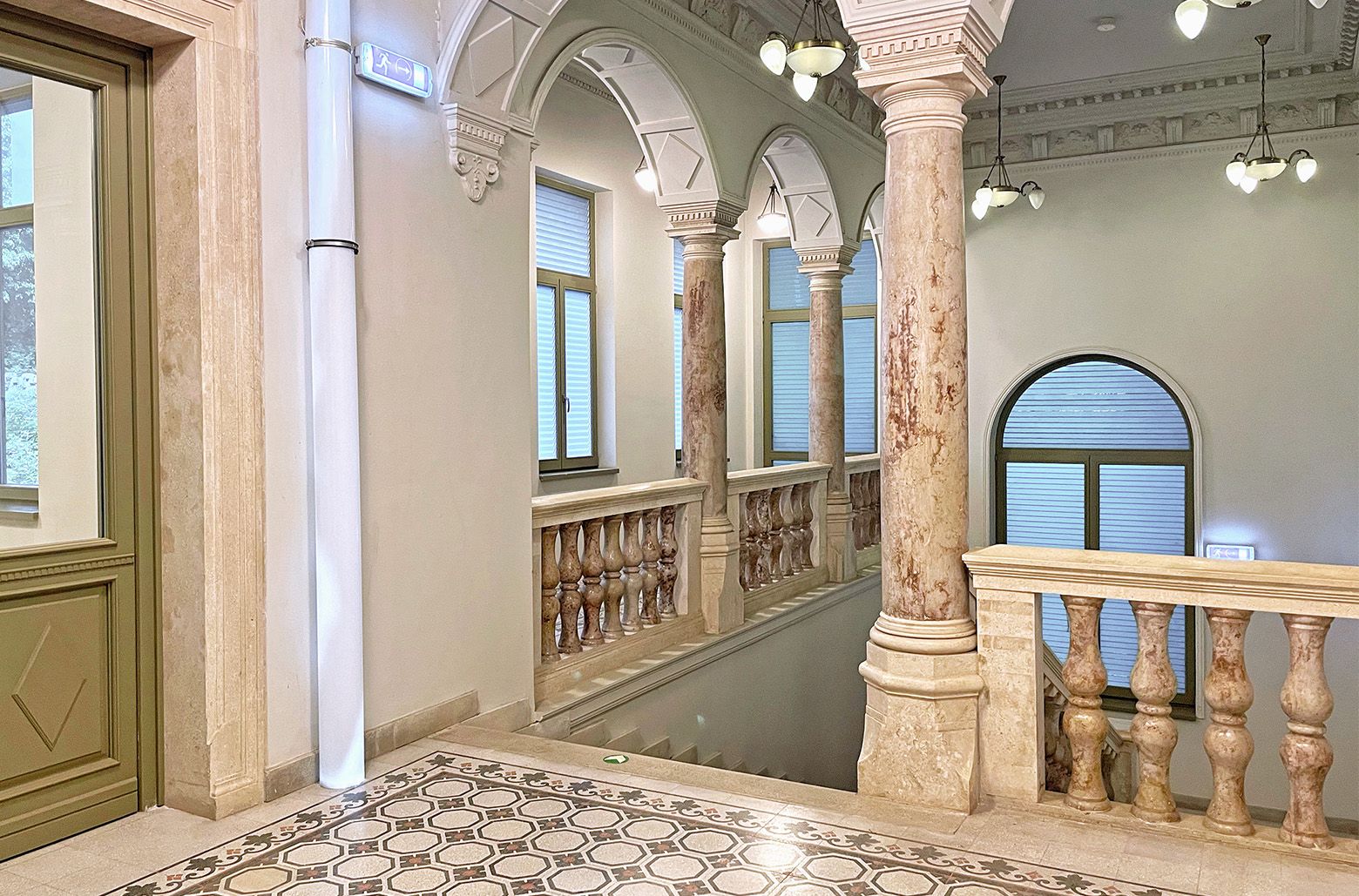

TERRAZZO TILE MANUFACTURE,EXECUSION
Baron Bánffy's serene residence
WORDS AND PHOTOGRAPHY: BEATRIX TORMA
The turbulent history and architectural metamorphoses of the Bánffy Palace are not uncommon phenomena in Hungarian architectural culture. The terrazzo tile cladding, remanufactured by Iamart is supposed to preserve the original values of the villa built at the turn of the century.





CONTEMPORARY AND HISTORICAL
TERRAZZO TILES MANUFACTURE,EXECUTION
Dezső Bánffy was the former Prime Minister of the Kingdom of Hungary, the chief bailiff of the counties and the president of the House of Representatives, who also held the office of the royal chief court marshal in the twilight of his life. He built the villa at the bottom of the Rózsadomb for his family at the end of the 19th century. Endre Ady wrote the following about the home of this reserved and determined politician of Transylvanian origin in the Oradea Daily: "The furniture is tasteful and Hungarian, on the wall hangs the portrait of Kálmán Tisza, on the side a handsome portrait of Ferenc Rákóczi II, in the distance the king looks down on the visitor, then the ancestors and Bánffy's family." The villa building is still considered a palace after the Bánffys and served as a residence for count families.
What to do with the marble bathroom?
A previous article in the exciting, online urban history and culture magazine PestBuda reports that in 1938 the building was already home to the police station. "the whole palace is full of marble, full of noble materials. Next to the rooms of the performing police officers is one of the count's bathrooms, which has been left as it was: with a built-in sunken marble bath, marble washbasins. For the time being, the police do not know what the bathroom, furnished with unparalleled luxury, will be used for. The kitchen has been converted into a filing room, the walls of the servants' quarters have been demolished and the basement stables have been converted into a holding cell.
Terrazzo, timeless and adaptable
The following decades brought further transformations, including a language school, a KISZ political education site and an investment that resulted in the building being converted into an office building. It was then that Iamart became involved in the history of the villa. The manufactory reconstructed and remanufactured the cement-based tiling for the ground floor and upstairs staircase spaces, using the original terrazzo tiling that had been dismantled, with classic white, red and black marble grains. The pattern of the terrazzo is simple, preserving the original design: an octagonal drawing and a floral pattern in the corners, with a classicised border motif in an acanthus pattern on the edges.


